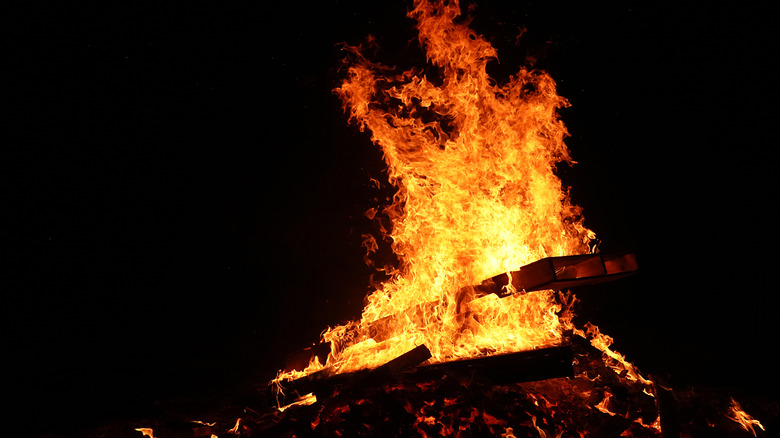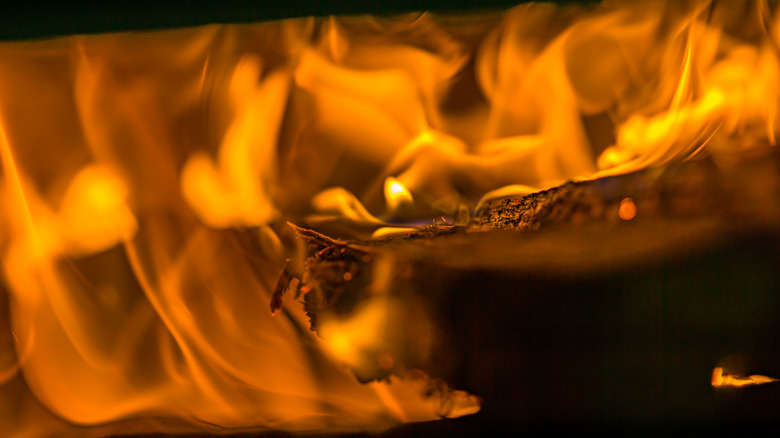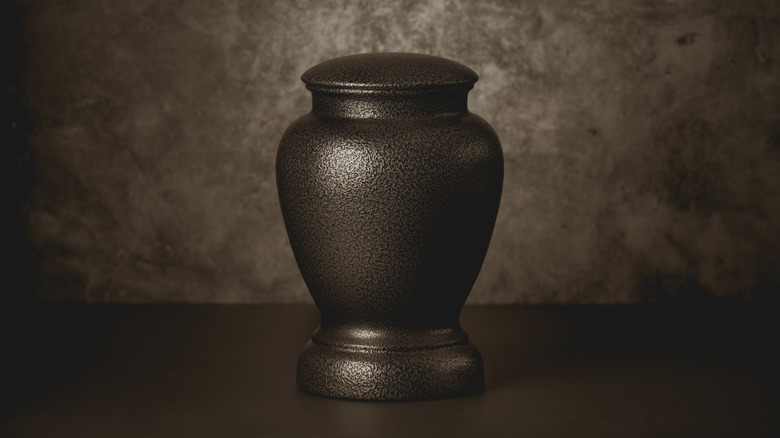How Long Does It Take To Cremate A Body? It's Complicated
Humans have been cremating their lost loved ones since the Stone Age, but we've come a long way from the fire pits they used. Modern cremation is a surprisingly technologically advanced business, governed by strict regulations that aim to ensure safety, consistency, and dignity for the dead.
From delivering a body to a funeral home to receiving the cremated remains, the whole process typically takes around 10–15 days. However, most of that time is spent on paperwork. A death certificate must be obtained from the government, the cremation needs to be authorized, and the deceased's next of kin must sign off on everything. Depending on the state in which the cremation takes place, there may be a mandatory waiting period of 24 or 48 hours.
Another factor in the cremation timeline is whether the deceased wishes to donate their body to science. In this event, any organs and tissues suitable for transplants will be removed, and the body may be kept for up to three years for research purposes. After this, a cremation will be performed, typically at no cost to the family. Of course, all of these steps are accessory to the actual cremation process itself, which typically takes a few hours. That depends, however, on the state of the body, and the exact type of cremation being done, which, believe it or not, doesn't always involve fire.
The process of burning a body
What cremation really does is remove all of the parts of the body that would otherwise decompose. In other words, it burns away everything other than the bones, reducing an adult human body down to just four to six pounds of ashes. Most of that lost weight is actually water, which accounts for about 60% of each human body. The body's tissues and organs are also vaporized, producing carbon and sulfur gases. Thus, in the most basic scientific sense, cremation is the transition of matter from solid to gas.
Today, all cremations performed in the United States follow a strict process. The body must be placed into a cremation container. It could be as simple as a cardboard box or as ornate as a burial casket, however, most state laws do not permit cremation without the body enclosed in some kind of combustible container. The container is then sealed in a cremator, a powerful furnace that can reach 1,500–1,900 degrees Fahrenheit, temperatures you'd expect to find in the thermosphere.
Depending on the size of the body and the make of the cremator, the actual combustion process may take 1–4 hours. At the end, only the body's bone fragments, composed primarily of heat-resistant calcium phosphate, remain. These are left to cool, after which they are ground down into a fine powder. So, the remains that we commonly refer to as "ashes" are actually pulverized bones.
There's another way to cremate a body
Traditionally, cremation refers to burning a person's remains in a fire, but in recent years, a new version of the process has been on the rise: water cremation. The thought of cremating a body using water might sound completely backwards, but it's actually a scientific process known as alkaline hydrolysis.
In an alkaline hydrolysis cremation, the body of the deceased gets placed in a sealed container and surrounded by a heated liquid solution made up of 95% water and 5% of an alkaline chemical, which could either be sodium hydroxide, potassium hydroxide, or a mix. This causes all of the body's tissues and organs to break down, leaving only the bone fragments. It's essentially a sped-up version of the natural decomposition process. There are two versions of water cremation: low-temperature alkaline hydrolysis, which takes 14–16 hours in a sub-boiling solution, and high-temperature alkaline hydrolysis, which takes 4–6 hours in a high-pressure boiling solution.
Water cremation is now legal in 26 U.S. states, and it is swiftly gaining popularity as a more environmentally friendly option than traditional cremation. A single flame-based cremation can release over 500 pounds of carbon dioxide into the atmosphere, taking into account both the vaporized body tissue and the emissions from the combustion process itself. Water cremations not only avoid this, but leave behind a liquid runoff filled with organic matter that serves as an excellent fertilizer. This way, one lost life can nurture new lives in the future.


